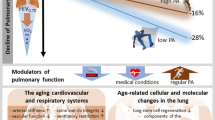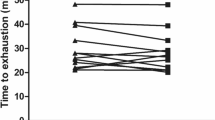Abstract
Justificative
The relationship between post-exercise heart-rate recovery (HRR) and resting cardiac autonomic modulation is an incompletely explored issue.
Objective
To correlate HRR with resting supine and orthostatic autonomic status.
Method
HRR at the 1st, 3th, and 5th min following maximal treadmill exercise were correlated with 5-min time-domain (CV, pNN50 and rMSSD) and frequency-domain (TP, LF, HF, LFn, HFn, and LF/HF ratio) indices of heart-rate variability (HRV) in both supine and standing positions in 31 healthy physically active non-athletes men. Statistical analysis employed non-parametric tests with two-tailed p value set at 5 %.
Results
Absolute HRR and Δ %HRR at each post-exercise time did not correlated with HRV in supine position, as well as at 1st min in standing position. At the 3rd min and 5th min, these measures negatively correlated with pNN50, rMSSD, TP, and HF indices, and only in the 5th min, they showed negative correlation with HFn and positive correlation with LF, LFn, and LF/HF ratio in the standing position. Coefficient of HRR (CHRR) at the 1st min negatively correlated with pNN50 and rMSSD and at 3rd and 5th min showed positive correlation with LFn and LF/HF ratio in supine position. With HRV indices in standing position CHRR from the 1st to 5th min showed the same respective negative and positive correlations as the other measures.
Conclusion
HRR from the 1st to 5th min post-exercise negatively correlated with parasympathetic modulation in resting orthostatic, but showed no correlation in supine position. At the 3rd and 5th min, a positive correlation with combined sympathetic-parasympathetic modulation in both positions was observed.
Similar content being viewed by others
References
Cole CR, Blackstone EH, Pashkow FJ, Snader CE, Lauer MS (1999) Heart-rate recovery immediately after exercise as a predictor of mortality. N Engl J Med 341:1351–1357
Okutucu S, Karakulak UN, Aytemir K, Oto A (2011) Heart rate recovery: a practical clinical indicator of abnormal cardiac autonomic function. Expert Rev Cardiovasc Ther 9:1417–1430
Goldberger JJ, Le FK, Lahiri M, Kannankeril PJ, Ng J, Kadish AH (2006) Assessment of parasympathetic reactivation after exercise. Am J Physiol Heart Circul Physiol 290:H2446–H2452
Tulppo MP, Kiviniemi AM, Hautala AJ, Kallio M, Seppanen T, Tiinanen S, Makikallio TH, Huikuri HV (2011) Sympatho-vagal interaction in the recovery phase of exercise. Clin Physiol Funct Imaging 31:272–281
Task Force (1996) Heart rate variability. Standards of measurement, physiological interpretation, and clinical use. Task force of the european society of cardiology and north american society of pacing and electrophysiology. Eur Heart J 17:354–381
Pumprla J, Howorka K, Groves D, Chester M, Nolan J (2002) Functional assessment of heart rate variability: physiological basis and practical applications. Int J Cardiol 84:1–14
Kleiger RE, Stein PK, Bigger JT Jr (2005) Heart rate variability: measurement and clinical utility. Ann Noninvasive Electrocardiol 10:88–101
Lombardi F, Malliani A, Pagani M, Cerutti S (1996) Heart rate variability and its sympatho-vagal modulation. Cardiovasc Res 32:208–216
Carnethon MR, Liao D, Evans GW, Cascio WE, Chambless LE, Heiss G (2002) Correlates of the shift in heart rate variability with an active postural change in a healthy population sample: the Atherosclerosis Risk in Communities study. Am Heart J 143:808–813
Carnethon MR, Liao D, Evans GW, Cascio WE, Chambless LE, Rosamond WD, Heiss G (2002) Does the cardiac autonomic response to postural change predict incident coronary heart disease and mortality? The Atherosclerosis Risk in Communities Study. Am J Epidemiol 155:48–56
Javorka M, Zila I, Balharek T, Javorka K (2002) Heart rate recovery after exercise: relations to heart rate variability and complexity. Braz J Med Biol Res 35:991–1000
Bosquet L, Gamelin FX, Berthoin S (2007) Is aerobic endurance a determinant of cardiac autonomic regulation? Eur J Appl Physiol 100:363–369
Jae SY, Heffernan KS, Lee M, Fernhall B (2011) Relation of heart rate recovery to heart rate variability in persons with paraplegia. Clin Auton Res 21:111–116
Nunan D, Jakovljevic DG, Donovan G, Singleton LD, Sandercock GR, Brodie DA (2010) Resting autonomic modulations and the heart rate response to exercise. Clin Auton Res Off J Clin Auton Res Soc 20:213–221
Cunha FA, Midgley AW, Goncalves T, Soares PP, Farinatti P (2015) Parasympathetic reactivation after maximal CPET depends on exercise modality and resting vagal activity in healthy men. SpringerPlus 4:100
Antelmi I, Chuang EY, Grupi CJ, Latorre Mdo R, Mansur AJ (2008) Heart rate recovery after treadmill electrocardiographic exercise stress test and 24-hour heart rate variability in healthy individuals. Arq Bras Cardiol 90:380–385
Esco MR, Olson MS, Williford HN, Blessing DL, Shannon D, Grandjean P (2010) The relationship between resting heart rate variability and heart rate recovery. Clin Auton Res 20:33–38
Chen JY, Lee YL, Tsai WC, Lee CH, Chen PS, Li YH, Tsai LM, Chen JH, Lin LJ (2011) Cardiac autonomic functions derived from short-term heart rate variability recordings associated with heart rate recovery after treadmill exercise test in young individuals. Heart Vessels 26:282–288
Lee CM, Mendoza A (2012) Dissociation of heart rate variability and heart rate recovery in well-trained athletes. Eur J Appl Physiol 112:2757–2766
Grant CC, Viljoen M, Janse van Rensburg DC, Wood PS (2012) Heart rate variability assessment of the effect of physical training on autonomic cardiac control. Ann Noninvasive Electrocardiol 17:219–229
Porto LG, Junqueira LF Jr (2009) Comparison of time-domain short-term heart interval variability analysis using a wrist-worn heart rate monitor and the conventional electrocardiogram. Pacing Clin Electrophysiol 32:43–51
Carvalho JL, Rocha AF, Nascimento FAO, Souza Neto J, Junqueira LF (2002) Development of matlab software for analysis of heart rate variability. ICSP`Proceeding -6th Internacional Conference os signal Processing 2:1488–1491
Molina GE, Porto LG, Fontana KE, Junqueira LF Jr (2013) Unaltered R–R interval variability and bradycardia in cyclists as compared with non-athletes. Clin Auton Res Off J Clin Auton Res Soc 23:141–148
ACSM (2013) Guidelines for exercise testing and prescription. Lippincott, Philadelphia
Buchheit M, Papelier Y, Laursen PB, Ahmaidi S (2007) Noninvasive assessment of cardiac parasympathetic function: postexercise heart rate recovery or heart rate variability? Am J Physiol Heart Circ Physiol 293:H8–H10
Jouven X, Empana JP, Schwartz PJ, Desnos M, Courbon D, Ducimetiere P (2005) Heart-rate profile during exercise as a predictor of sudden death. N Engl J Med 352:1951–1958
Maciel BC, Gallo L Jr, Marin Neto JA, Lima Filho EC, Martins LE (1986) Autonomic nervous control of the heart rate during dynamic exercise in normal man. Clin Sci 71:457–460
Danieli A, Lusa L, Potocnik N, Meglic B, Grad A, Bajrovic FF (2014) Resting heart rate variability and heart rate recovery after submaximal exercise. Clin Auton Res 24:53–61
Reardon M, Malik M (1996) Changes in heart rate variability with age. Pacing Clin Electrophysiol 19:1863–1866
Acknowledgments
The authors gratefully acknowledge Miss Lúcia Kobayashi from the Exercise Physiology Laboratory of the Faculty of Health Education and Mr. Ronaldo de Andrade Rocha (in memoriam) from the Cardiovascular Laboratory of the Faculty of Medicine, both at the University of Brasilia, by their valuable technical assistance provided.
Author information
Authors and Affiliations
Corresponding author
Ethics declarations
Conflict of interest
The authors declare no financial or others conflicts of interest.
Rights and permissions
About this article
Cite this article
Molina, G.E., Fontana, K.E., Porto, L.G.G. et al. Post-exercise heart-rate recovery correlates to resting heart-rate variability in healthy men. Clin Auton Res 26, 415–421 (2016). https://doi.org/10.1007/s10286-016-0378-2
Received:
Accepted:
Published:
Issue Date:
DOI: https://doi.org/10.1007/s10286-016-0378-2




